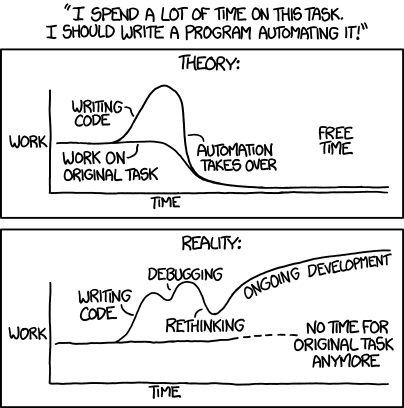AI & Data
Web Scraping & HTML Parsing
Lecture 4
Extracting structured data from web pages using Python, BeautifulSoup, and XPath techniques

This work is licensed under CC BY-NC-SA 4.0
© Way-Up 2025
How to handle Data present in the Web? (1)
Web Scraping = using data available through regular web pages- Web scraping is a technique allowing to fetch data from web page
- There is no common "format" that drives how data are contained in web pages
- The web page may change at any time, so it does not represent a stable data source
How to handle Data present in the Web? (2)
Html- Content displayed from your web browser is contained in
html(Hyper Text Markup Language) files htmlis a markup language, close to xml, but with less constraints- the browser is highly fault tolerant, not many websites would display at all if the browser was strictly enforcing standards
How to handle Data present in the Web? (3)
Html - examplewhat you have seen in the previous slide is coded this:
<section class="slide">
<h2>How to handle Data present in the Web? (2)</h2>
<p>Html</p>
<ul>
<li>Content displayed from your web browser is contained in <code>html</code> (Hyper Text Markup Language) files</li>
<li><code>html</code> is a markup language, close to xml, but with less constraints</li>
<li>the browser is highly <b>fault tolerant</b>, not many websites would display at all if the browser was strictly enforcing standards</li>
</ul>
</section>How to handle Data present in the Web? (3)
Difference between DOM and html- When there's a "fault" in the html file, the browser will do its best to correct it
- What you see is the rendered DOM (Document Object Model) and not the raw html anymore
- When a JavaScript action occurs, it works on this DOM object (in memory), not on the html file anymore
How to handle Data present in the Web? (4)
DOM vs html: example- DOM can be accessed via the developers tools (on chrome F12 key)
- navigate to : this sample SPA(Single Page Application)
- Right click on the page, and select "view source"
- Now go back to the original page, and press F12 to open the developers tools
- compare the raw html (view source) vs the rendered DOM (F12), quite different isn't it?
How to get Data present in the Web?
Exercise: working on a manual extract
- Navigate here
- Think about the best way to extract the table of Human Development Index (whatever technique is acceptable)
- produce a csv from it as fast as you can, it does not have to be automated! (+1 for the 3 first valid submissions)
How to get Data present in the Web?
Exercise: fetch data from a web page and convert it to an Orange Data Table- Go to this web page wikipedia/airports
- use the provided snippet to extract from the xml document a list of Regions (h2 tags)
from lxml import etree
import requests
from bs4 import BeautifulSoup as bs
def getContent(link: str) -> str:
webPage = requests.get(link)
return str(bs(webPage.content, "html.parser"))
content: str = getContent("https://en.wikipedia.org/wiki/List_of_international_airports_by_country")
html: etree.ElementBase = etree.HTML(content)How to get Data present in the Web? (2)
- Now a bit harder task : extract the list of airports with their cities, countries, regions and IATA Code
- The target data table rows will look like this row:
following this format['Americas', 'Caribbean', 'Cuba', 'Holguín', 'Frank País Airport', 'HOG'][Region, SubRegion, Country, City, Airport name, IATA Code] - You will probably need this snippet
allNodes: list[etree.ElementBase] = html.xpath(RELATIVE_ROOT+"/*") length: int = len(allNodes) #... node: etree.ElementBase = allNodes[i] if node.tag == 'h2' and h2Count != 0: currentRegion = node.xpath("./span[@class='mw-headline'][1]")[0].text
Limits of direct html fetching
- Fetching the html page is more reliable when it works
- Sometimes javascript is required
- In that case you need a "ghost" browsing, meaning you simulate the interaction between the browser and the website
- an example of this, using selenium, here: tutorial
When to use scraping?
Short answer: when you cannot do otherwiseLonger answer: beware of the automation cost, verify that it is worthing it!
- You can use scraping when data volume is too large (to do it manually)
- Limit the effort (when possible) to reference data that will not move too much (web pages can be updated at any time!)
Automation: Theory vs Reality

Other web data you can fetch
REST and XMLBesides web scraping, you can often get data from structured sources like REST APIs, which are designed for machine-to-machine communication.
aggregating different sources with merge and concatenation
- Merge is working like SQL joins
- Example : with the orange zoo dataset
Exercise: Build an Orange Data table from those two tables (users and posts)
Merging dataframes